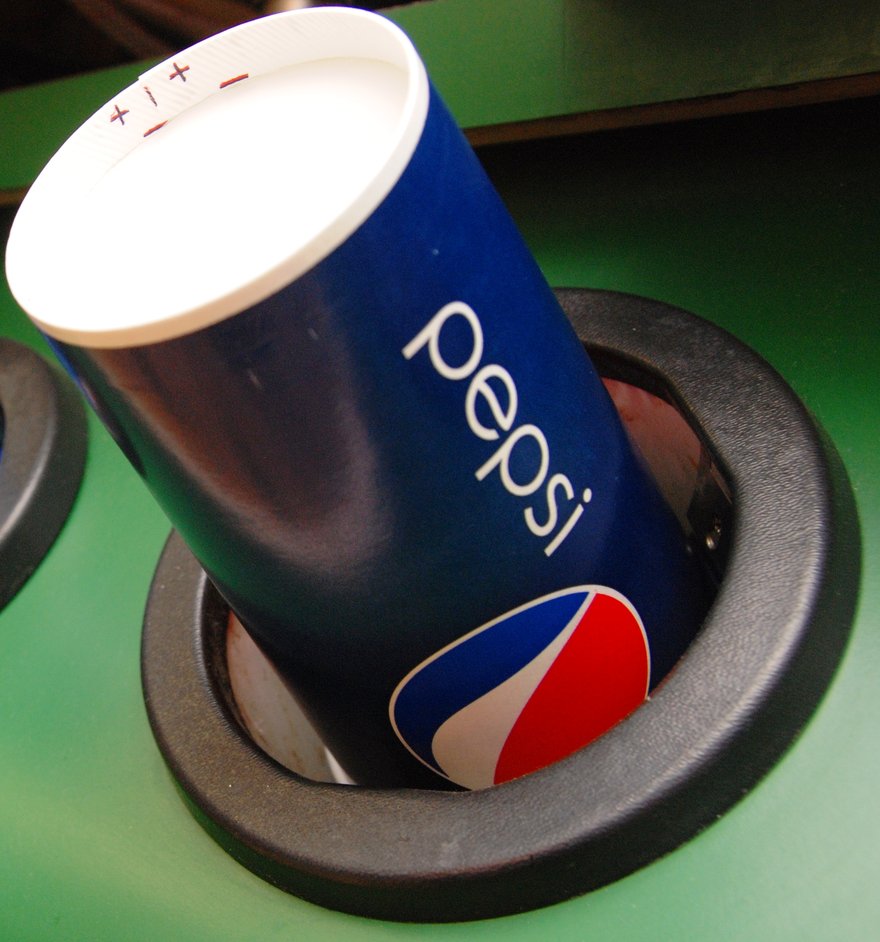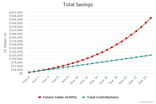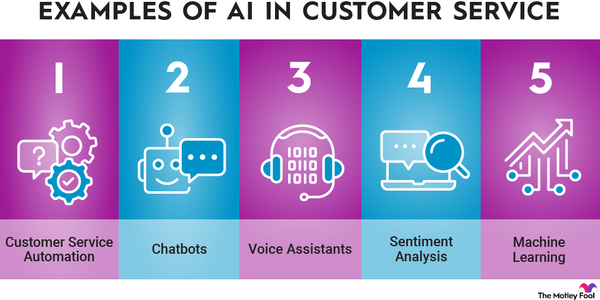PepsiCo (PEP -0.62%) is one of the largest companies in the world -- and if you haven't already, investing in Pepsi stock is worth considering. It's great for passive income because it pays a dividend and often increases the dividend amount. The food and beverage company has also been posting strong sales numbers recently.
How to buy
How to buy Pepsi stock
Whether you've already decided to buy Pepsi stock or are still thinking about it, this step-by-step guide will cover everything you need to know. We'll start with how to invest in Pepsi and then provide more information on the company and how it looks as an investment. So, let's get started with four steps you can follow to buy Pepsi stock.
Step 1: Open a brokerage account
A brokerage account is how you invest in publicly traded companies like Pepsi, as well as other types of investments, such as bonds, mutual funds, and exchange-traded funds (ETFs). If you already have a brokerage account, you can skip this step -- unless you're unhappy with it and want to find a new one.
Exchange-Traded Fund (ETF)
There are lots of online stockbrokers available. You can find our experts' favorites on our list of the best stock brokers. After you've found one, choose the option to open an account and fill out the application. Keep in mind that you'll need to deposit money into your account before you can invest. You may want to set up a transfer from your bank account immediately because processing can take a few days.
Step 2: Figure out your budget
This is where you'll decide on the finer points of how you plan to invest your money. If you have some money saved, you could invest it all at once. If you want to make it a regular part of your routine, one popular method is dollar-cost averaging, where you invest a set amount of money on a fixed schedule. For example, you could invest $500 per month.
Remember to figure out both your overall investing budget and your budget for investing in Pepsi. Putting all your money into a single stock is never a good idea. It's better to diversify your portfolio so you're not overly reliant on one company's success.
Step 3: Do your research
Research is the most time-consuming part of investing, but it's also the most important. Without research, buying stocks is more like gambling than investing.
If you're going to build your own investment portfolio, then learning to research stocks is a must. If you'd rather save time, you're better off with more passive investments, such as investment funds, or you could subscribe to an expert stock-picking service.
Step 4: Place an order
The final step is to make your stock purchase. Log in to your brokerage account through its online platform or mobile app. Go to the trade tool and enter the ticker for Pepsi stock: PEP. Select the option to buy, enter the amount you want to invest, and place the order.
You can place a stock order in several ways. Place a market order if you want the order to go through immediately. This will buy or sell a stock at the best available price, typically near the most recent ask price for buy orders. Alternatively, you can place a limit order if you don't want to pay more than a certain amount. This allows you to limit how much you're willing to pay to buy the stock.
Limit Order
Should I invest?
Should I invest in Pepsi stock?
Pepsi is a quality investment. Its sales and profit numbers are moving in the right direction, its stock is affordably priced compared to earnings, and it's a fairly low-risk stock that can provide stable growth for your portfolio.
Pepsi sales were up in 2022. Revenue increased to $86.39 billion, a 9% increase from where it was in 2021. Its profit margin decreased from 14.0% to 13.3%, which isn't ideal, but it's understandable with costs rising so much due to inflation. Even with the decline in profit margin, Pepsi's operating profits rose by 3% in 2022, and its core operating profits increased by 8%.
Although Pepsi has some stiff competition, most notably rival Coca-Cola (KO 0.0%), it also has key competitive advantages. Coca-Cola may have the lead as a beverage company, but Pepsi has a far more diverse portfolio of food and beverage products.
That diversity has helped it post much larger revenue numbers than Coca-Cola, which had $43 billion in revenue in 2022. In addition to its signature soda line, major Pepsi brands include:
- Mountain Dew
- Frito-Lay
- Quaker food and snacks
- Tropicana
- Aquafina
One of the nice things about buying Pepsi stock is that it's favorably priced for investors. Shares were valued at less than three times annual sales as of the third quarter of 2023. For comparison's sake, Coca-Cola was double that, with shares valued at about six times annual sales. That puts Pepsi in a sweet spot for investors: Business is going well, but the valuation is still on the low side.
The main downside to Pepsi is that its profit margins aren't the best, and it probably won't skyrocket in value. Although it does considerably more in sales than Coca-Cola, it's worth noting that Coca-Cola has a much higher profit margin -- 30.7% in 2022, more than 17.0% higher than Pepsi. That's a big reason some choose to invest in Coca-Cola stock instead of Pepsi.
Pepsi may not be the most exciting stock, but it's not much of a risk, either. The outlook is good, and it will likely provide long-term growth. Every investor needs that type of stock in their portfolio, so it just depends on whether that's what you're currently looking for to fill yours.
Profitability
Is Pepsi profitable?
Pepsi is profitable, with an operating profit of $11.51 billion in 2022, a 3% increase over its 2021 numbers. Although it had only modest growth, that was largely due to operating cost increases and significantly higher commodity costs due to inflation. Overall, Pepsi has been consistently profitable over the years, making it one of the more secure stocks to invest in.
Dividends
Does Pepsi pay a dividend?
Yes, Pepsi pays a dividend. The dividend amount was $1.265 per share as of Aug. 31, 2023. Pepsi is one of the better dividend stocks because it has a high annual dividend yield and has consistently raised its dividend amount for more than 50 consecutive years, making it a Dividend King.
ETF options
ETFs with exposure to Pepsi
Since Pepsi is such a large company, many ETFs offer exposure to it. If you'd rather invest in an ETF to spread your money across more companies, here are some of the best Pepsi ETF options:
- The iShares U.S. Consumer Staples ETF (IYK -0.3%) is the ETF with the largest percentage allocated to Pepsi stock. It aims to track an index of equities in consumer staples, including food and consumer goods.
- The First Trust Nasdaq Food & Beverage ETF (FTXG -0.47%) aims to track an index of companies in the food and beverage industry. Pepsi is one of its main holdings, along with Coca-Cola and Kraft Heinz (KHC -0.55%).
- The Schwab U.S. Dividend Equity ETF (SCHD -0.1%) aims to track the Dow Jones U.S. Dividend 100™ Index. As you'd expect, it's an excellent choice if you're looking for an ETF with lots of quality dividend stocks.

Those are just a few of the ETFs with heavy allocations of Pepsi stock. There are also broader index funds, such as the Vanguard S&P 500 ETF (VOO 1.0%), which aims to track the S&P 500, and the Invesco QQQ ETF (QQQ 1.54%), a NASDAQ-100 index fund. These provide a more diverse range of investments but have smaller Pepsi allocations.
Stock splits
Will Pepsi stock split?
Pepsi hasn't announced any plans for a stock split, but it's certainly a possibility. The company has split its stock four times over the years to keep its share price down. That share price has increased quite a bit over the years and is now much higher than in 1996 before its most recent stock split.
The share price for Pepsi is also significantly higher than rival Coca-Cola's. A stock split could be a way for Pepsi to lower its price and become more attractive to potential investors.
Related investing topics
The bottom line on Pepsi stock
If you want to invest in Pepsi, you have several options. The most straightforward option is to buy Pepsi stock yourself through a brokerage account. For a more diversified investment, you can pick one of the many ETFs with exposure to Pepsi.
As far as whether you should put your money in Pepsi, it's a strong, flourishing company that's likely to continue growing in the future. You can get it at a reasonable share value compared to its annual sales. Pepsi stock is a smart choice if you're looking for something safe and with a great dividend.
FAQs
Investing in Pepsi FAQs
Is Pepsi a buy or sell stock?
Pepsi is considered a buy stock based on recent projections from Wall Street analysts. Most expect at least moderate growth in the coming years.
Has Pepsi stock ever split?
Yes, Pepsi stock has split four times. Here are the stock-split dates and ratios for Pepsi:
- May 31, 1977: 3-for-1 stock split
- May 29, 1986: 3-for-1 stock split
- Sept. 5, 1990: 3-for-1 stock split
- May 29, 1996: 2-for-1 stock split
What is the forecast for Pepsi?
Forecasts for Pepsi have the stock growing by about 12% over the next year. However, there is a range of estimates from analysts and no way to predict exactly what will happen with Pepsi stock. But it is a large company and has consistently grown its profits over the years.
































































































































































































































